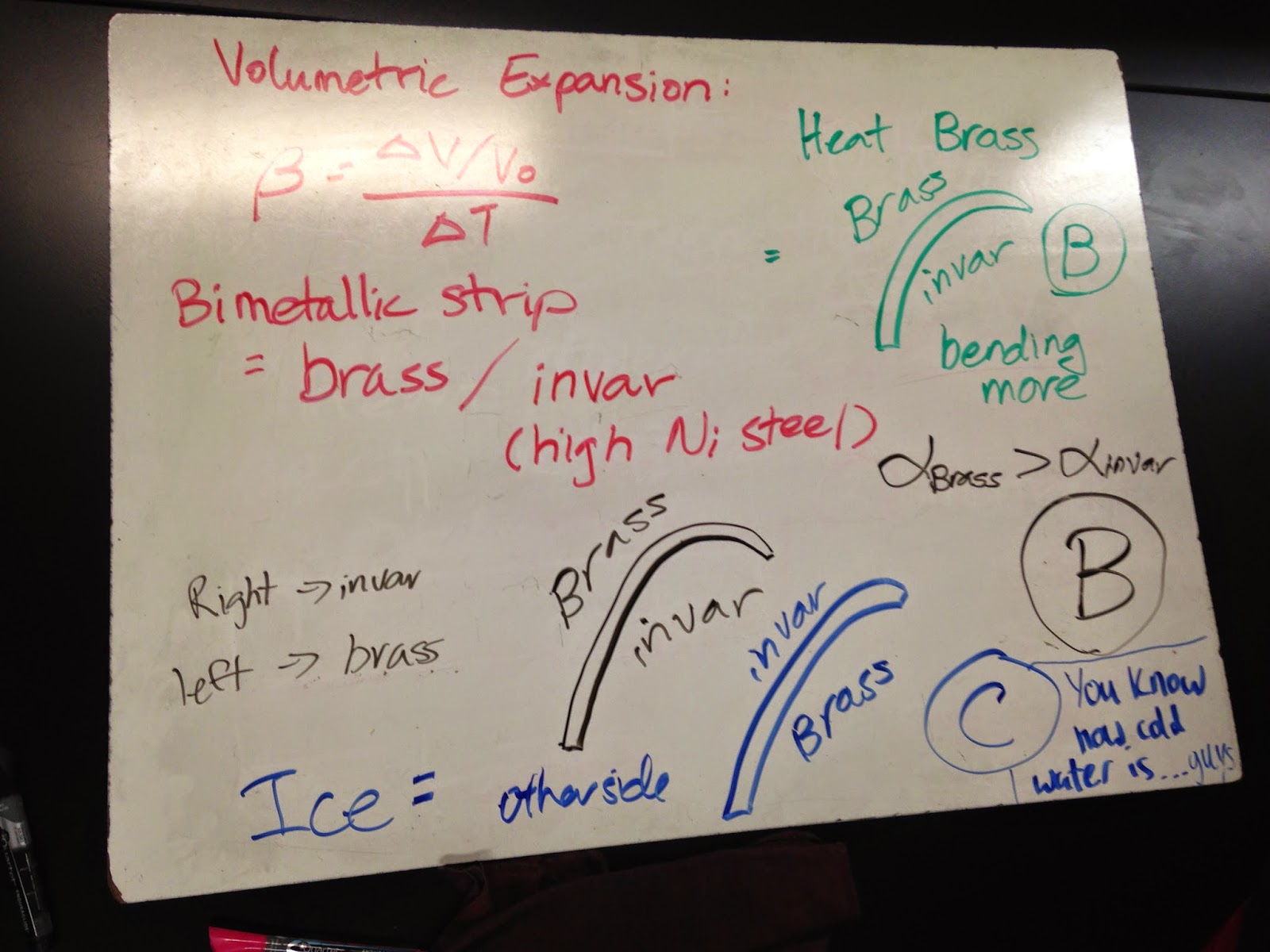 |
 |
| Linear Expansion is dependent on temperature change and the coefficient of linear expansion. |
 | ||
| Professor heats a bimetallic strip, made up of brass and invar. The brass expands more with this introduction, therefore it is curved on the outside. |
 |
| When energy is removed, the brass shrinks faster, causing it to cave in. |
 |
| This student stirs a cup of water as it is heated. |
 |
| In black is what we expect the relation between temperature and the addition of heat over time to look like. In green is a more accurate representation of what occurs. |
 |
| As the water heats from melting to boiling temperatures, the change in its temperature over the amount of time is linear, but it slows gradually near the phase changes. |
 |
| Steam heats up one end of a steel rod. |
 |
| As the rod absorbs energy from the heat, it elongates, causing a wheel to rotate on the right end of the rod a distance equal to the change in length of the rod. |
 |
 |
| Our calculations for the final temperature of a 790 g block of ice at -5 degrees Celsius after 215 kj are added to it. The heat is enough to bring the ice up to melting temperature, creating an ice bath. |
 | ||
We calculate that 850 g of water at 22.0 degrees Celsius is the amount of water that will freeze to a final temperature of 0 degrees Celsius when poured over a 255 gram block of ice at -12.0 degrees Celsius.
|
 |
| The pressure needed to raise an amount of water in a tube by a given height is equal to its density multiplied by the height change and gravity. |






No comments:
Post a Comment